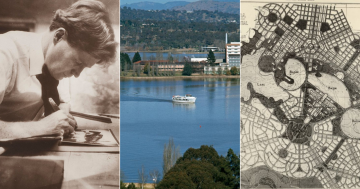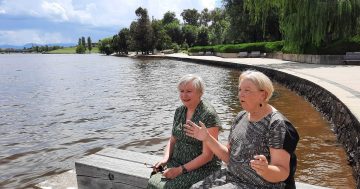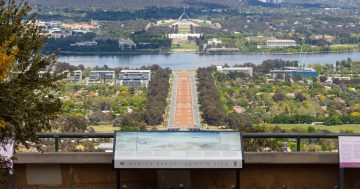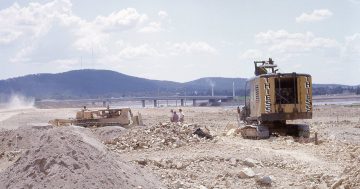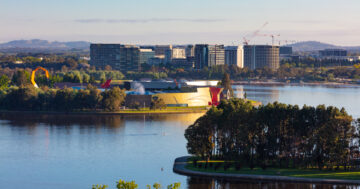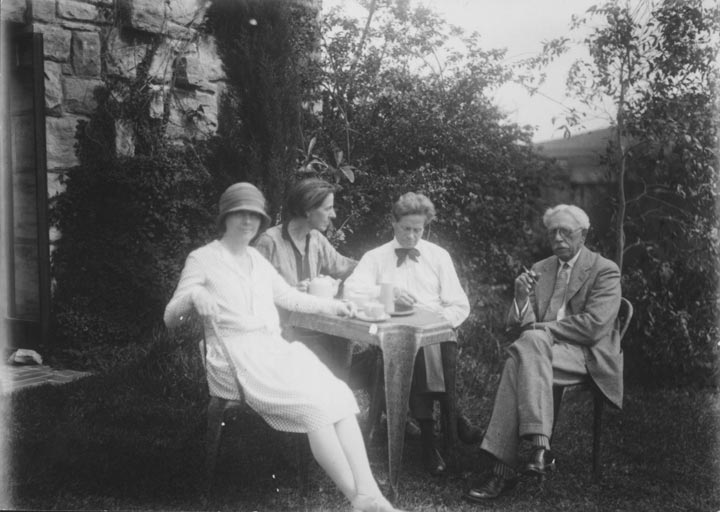
Portrait of Marion Mahony Griffin and Walter Burley Griffin. Photo: National Library of Australia, nla.pic-vn3295970,
The rich tumultuous tale of Walter Burley Griffin and Marion Mahoney Griffin has more to give to Canberra, according to Dr David Headon, the History and Heritage Adviser for the Centenary of Canberra and a distinguished historian.
While the legacy of their groundbreaking Canberra design is well marked, Headon says we have missed a crucial element in the social, intellectual and cultural story of the remarkable American pair. And, he believes, there’s an opportunity to build enduring links between ourselves, Chicago and Lucknow in India, all key parts of the Griffin story.
The Lucknow connection is the lesser-known: Griffin died there in 1939 of peritonitis, having been invited to design buildings for the university.
Recently, Labor MLA Deepak Raj Gupta visited Griffin’s grave and arranged to have it cleaned and the weeds around it cleared.
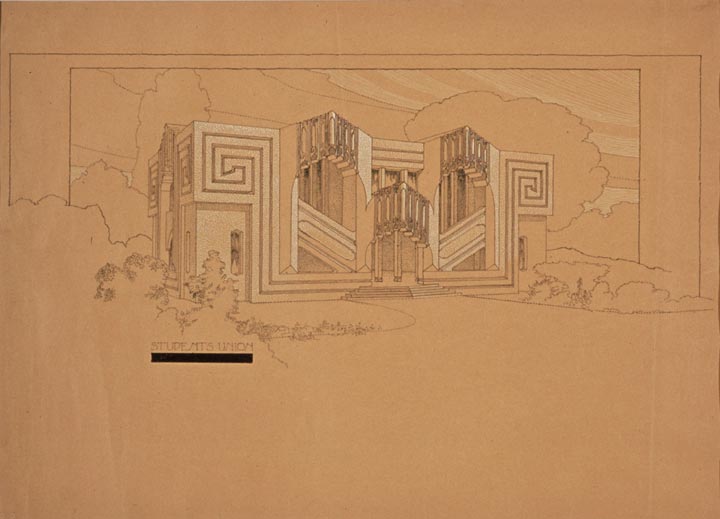
Griffin’s design for the Lucknow University Student Union. Image: File.
Headon visited the city in 2012 with Robyn Archer ahead of Canberra’s centenary and agrees that the master architect’s final resting place has been sadly neglected and needs to be visited by more than the local cobras (of which there are apparently plenty in the vicinity).
He and Archer took with them water from Lake Burley Griffin which they sprinkled on the grave and travelled on to Chicago to visit Marion’s last resting place in Graceland Cemetery, Chicago.
Headon’s great idea is that we could build enduring links with the cities connected by ideas as well as designs.
Chicago, for example, builds significant tourist and academic traffic on the Frank Lloyd Wright story, while Glasgow celebrates Charles Rennie Mackintosh, and Barcelona is inextricably linked with Antonio Gaudi.
Walter and Marion brimmed with ideas. They were Theosophists before moving to anthroposophy, underpinned by Rudolf Steiner’s thinking, and their beliefs about the value of nature and community also informed their design work on the Sydney suburb of Castlecrag.
Things had gone somewhat awry by the late 1920s when Walter had an affair that may have produced a child. Marion was terribly hurt and a separation ensued although they remained in constant contact.
After the invitation from Lucknow arrived, Walter initially travelled there alone in 1934. The voluminous and “incredibly poignant” correspondence between them traces hobnobbing with maharajahs and Marion’s overwhelming passion for Steiner’s philosophy.
Griffin spent the last 15 months of his life setting up an architectural firm in Lucknow. He and Marion reconciled and they produced more than 50 projects between 1935 and 1937.
Because of the Great Depression and other factors, the Lucknow University designs were never fully carried out. Marion, heartbroken, eventually returned to Chicago where little is known about how she spent the war years before her own death.
Griffin biographer Alistair McGregor is convinced that Frank Lloyd Wright lifted some of the Griffins’ ideas, but Headon says the main point of departure is that while Wright was “an irritating genius” focussed on his own reputation, Walter and Marion had a genuine passion for the kind of community they could build around their designs.
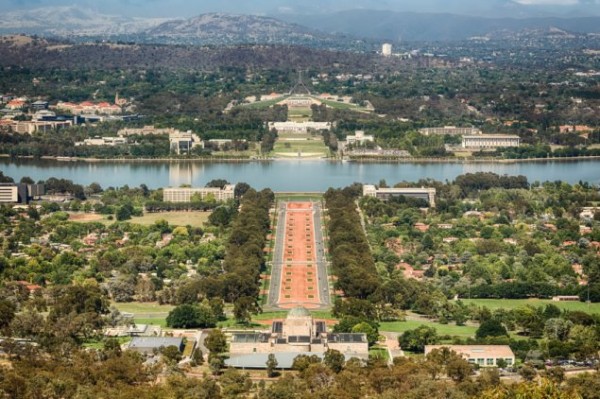
The view of Canberra from Mt Ainslie demonstrates the Griffin vision. Photo: File.
“The Griffins come to Australia and refer to our gumtrees as ‘the poets of trees’”, he says. “They fought bushfires at Castlecrag, they became besotted with this landscape and its possibilities.
“I’d say, look, Canberra, you are sitting on one of the great narratives about progressive ideas and a vision for this country that go beyond the beauty of the design.
“This city was uniquely established on the basis of world-leading ideas. Walter was a single taxer for years, they wanted an egalitarian community. The ideals they brought to their design also laid the foundations for the kind of community we would become”.
Headon is hoping for a breakthrough with the ACT Government that would establish and nurture those connections, pointing to the fact that India is an increasingly important trade partner for Australia.
“This city is not just special, it is unique on the back of that history”, he says.
“If you go to the top of Mt Ainslie, that landscape still looks like Marion’s beautiful renderings in the footprint. But there are ways you can connect beyond that.
“We should think beyond the square to set up city agreements with Lucknow and Chicago and possibly with New York where much of Marion’s legacy is housed at Columbia University.
“This needs a genuine exchange of like-minded parties about the possibilities and there are already some strong connections through the Griffin legacy. It will only happen with people chipping in on the basis that it’s a splendid idea that we can all benefit from,” Headon says.
Headon thinks the Griffins would not be displeased with what they wrought, notwithstanding occasional poor development choices along the way.
We are still the city in the landscape, that’s what we are now. We’ve still got what the Griffins imagined, he says. “The fact of it is that this space, this wonderful space has been realised.”












